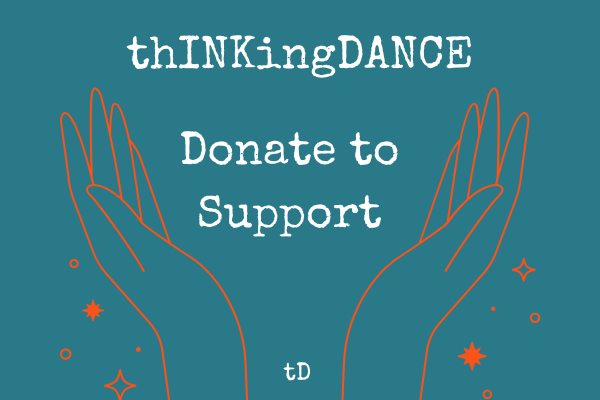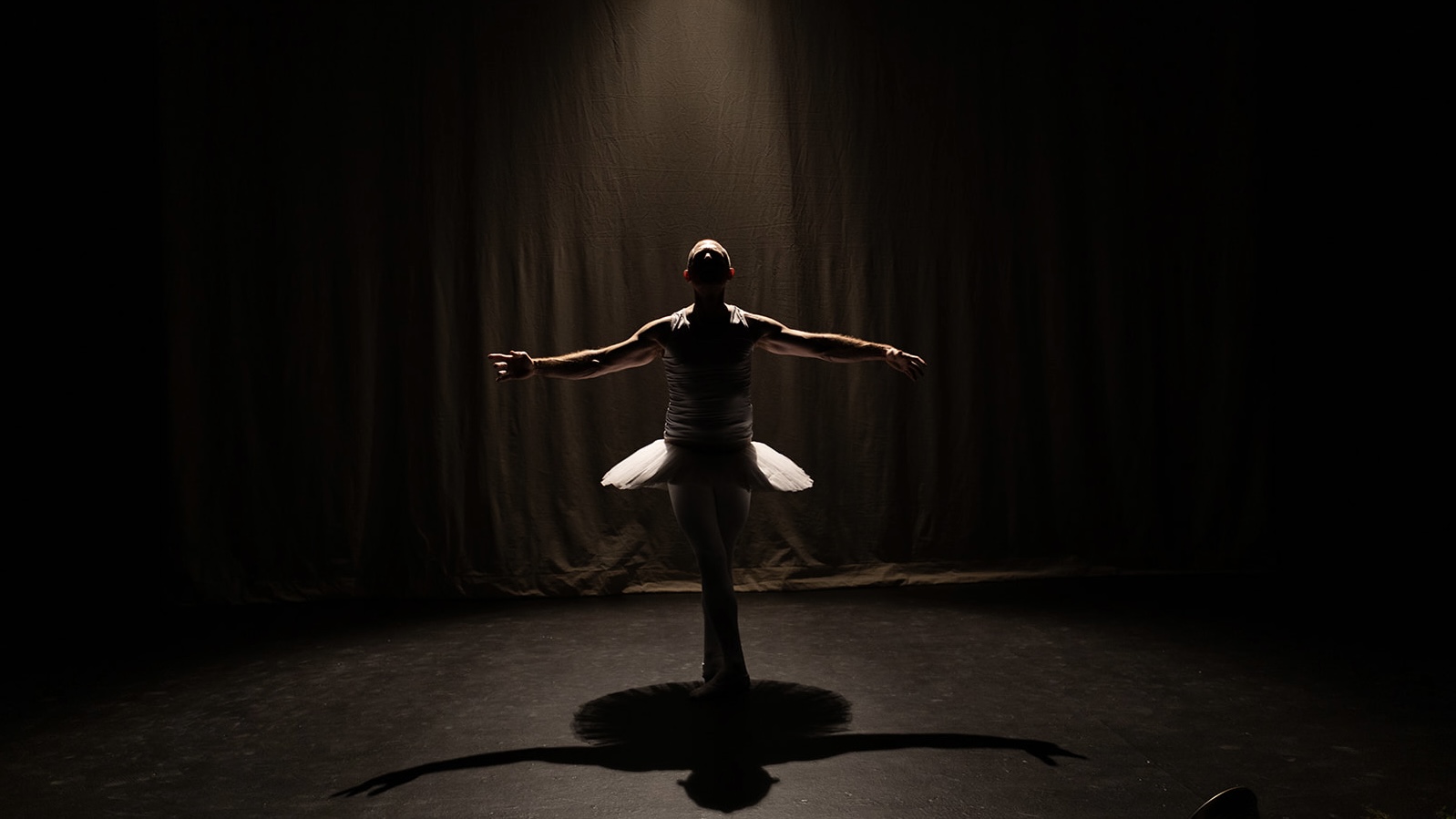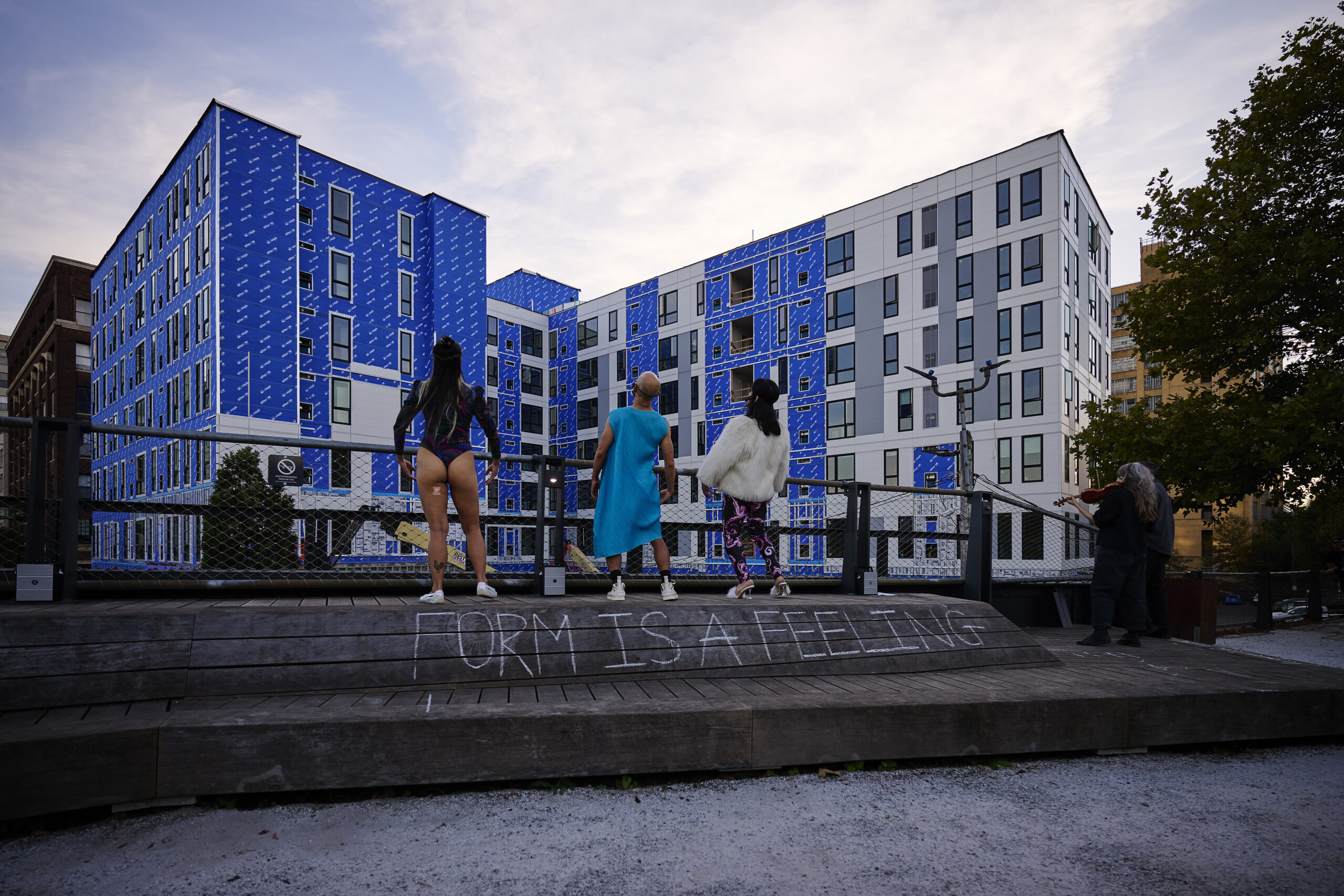Radical, tenacious, intergenerational imagination makes vision become reality. It’s what brought a group of Black dancers and musicians together in a Philadelphia basement, in barely desegregated 1969 America, determined to connect with culture and heritage, even when the police were called on them for the “noise” of their drums during rehearsal. Receiving a major grant from one of the most elite arts funders in the city, and then having a world premiere performance at one of Philadelphia’s major classical performance venues fifty years later, probably would have sounded like science fiction to the artists in that basement. But as sci-fi predictions sometimes have a way of coming true, that’s what happened for Kulu Mele African Dance & Drum Ensemble.
At the recent BlackStar Film Festival, a documentary offered a look behind the curtain of this storied pillar of Philadelphia’s African diasporic culture. The film, The Ancestors Live, marks the Kulu Mele ensemble’s 50-year anniversary in 2019, delves into its origins and history, and follows the group on a trip to Cuba to develop its most recent major work, Ogun & the People (previously reviewed on thINKingDANCE).
BlackStar is an annual film festival and cultural happening in Philadelphia that showcases independent films by Black, Brown, and Indigenous people around the world. Sometimes described as the Black Sundance, it is a dynamic gathering and celebration of BIPOC storytelling. Due to the coronavirus pandemic, BlackStar 2020 was mostly virtual. Compared to a normal year, experiencing The Ancestors Live alone in the quiet of my home felt like an acute loss, community exchange being central to its story, to Kulu Mele, and to BlackStar. This way of experiencing culture felt like a form of sci-fi, too.
Directed by Aidan Un, The Ancestors Live serves as part oral history, part documentation of rehearsal process and performance. The film’s first act (titled “The Voices of our Ancestors,” also the translation of the company’s name) moves from Kulu Mele’s founding in 1969 by Robert Crowder and its early years through conversations with Dorothy (Dottie) and John Wilkie, now the group’s longtime artistic and musical directors, respectively. Younger members of the company expressed gratitude and pride for the Wilkes and other early Kulu Mele members for perpetuating African culture against all odds, channeling traditional drums and deities in an era when it was difficult just to walk down the street as a Black person. This relentless drive to reconnect with cultural heritage has now continued for multiple generations.
Act 2 of the film follows the company to Cuba, where they studied with the renowned Ballet Folklorico Cutumba to develop Ogun & the People. This work interprets a Yoruba pataki (or parable) about the orishas. The artists described that enslaved Africans in the Caribbean were able to hold on to their culture and religion more than in America, and bringing the company to Cuba for this cultural exchange realized a long-held dream of Dottie’s. Company members described a deep feeling of connection to the “why” of dance from this pilgrimage, which gave new meaning to their sweat, effort, and commitment seen in the rehearsal footage.
Punctuated by major milestones and colorful, energetic performances, the film was also full of small, cherishable moments: pre-performance gatherings and rituals like consuming spoonfuls of honey, group breathing, and invocations of the spirit of the ancestors. An elder performer watching the younger dancers on stage from the wings. Good-natured teasing in rehearsal in the name of rigor and precision in everything from rhythm to head placement. Unchoreographed dancing through Cuban streets to the sounds of the city, laughter, and a carried xylophone. Dottie’s small, perhaps unconscious mirroring movements while watching old Kulu Mele footage on VHS tapes. An African dance class for kids (“keep your knees bent at all times”), before which Dottie implored the young dancers to get their homework done (“because if you don’t, they won’t let you come. And I need you to be here.”). All these small moments that, over fifty years, have added up to something much bigger.
A brief but potent scene in the film showed Kulu Mele performing in Jamestown, VA, near the edge of the James River, where the first enslaved Africans arrived in the United States. John Wilkes notes that though the in-person audience for the performance that day was relatively small, he felt they were “performing for the ancestors who came here.” In this time without live audiences in performance, this film asserts that our ancestors and descendants may always be our most important audiences—that even and especially through our dancing bodies, we can honor the legacy of our ancestors while trying to become good ancestors ourselves by imagining and building new realities.
The Ancestors Live – 50 Years of Kulu Mele African Dance & Drum Ensemble, Kulu Mele African Dance & Drum Ensemble, BlackStar Film Festival (online), August 22.






